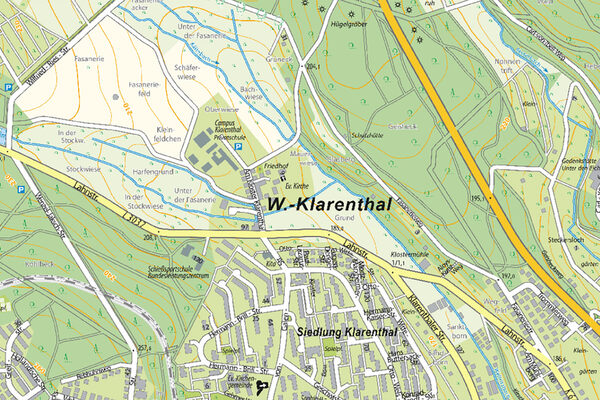Klarenthal: From monastery to modern housing estate
The Klarenthal monastery, which was founded over 700 years ago, once stood in Wellritztal, on the edge of today's settlement.
The foundation of the monastery
In 1298, King Adolf of Nassau founded the Klarenthal Monastery. It was to serve as a burial place for him and his family. Although the king himself was not buried here, his wife, Queen Imagina, was laid to rest in the monastery church. Until its dissolution in 1559, the monastery was the burial place of the queen and many members of the House of Nassau.
Significance over the centuries
Klarenthal Monastery was not only a burial site, but also the only monastery in Wiesbaden and an important religious center. Regular processions led from the town to the monastery, which thus played a central role in the spiritual life of the town.
Housing shortage in the post-war period
After the Second World War, Wiesbaden suffered from a major housing shortage. The Wiesbaden city council therefore decided to build three large housing estates. In 1960, Klarenthal was chosen as the location for a new estate. The development plan envisaged building the estate on a slope and keeping the bottom of the valley clear to ensure air circulation.
Architect of the new era
Profwssor Ernst May was commissioned with the planning in 1960. The plan was to build 4,000 residential units for around 14,000 inhabitants. May focused on New Building, which was intended to offer everyone sufficient living space, light, air and sun. He was known for his spacious, green large housing estates in Frankfurt.
Origin of the Klarenthal settlement
Prof. May also implemented this concept in Klarenthal. From 1964, a modern, liveable housing estate was built here on a vacant field between the railroad line and Klarenthaler Strasse. The first residents moved in as early as 1966. The new district was deliberately given the name of the historic monastery in order to build a bridge between the modern settlement and the centuries-old history.
Historical highlight
Of course Goethe also visited the old Klarenthal! And he did so three times: on June 29, July 3 and July 31, 1815. During his Wiesbaden cures in 1814 and 1815, he made excursions to the surrounding area and recorded his experiences in his diaries.
Are you interested in Klarenthal?
Visit the virtual district museum of the voluntary working group and discover more about the multifaceted history of Klarenthal.
